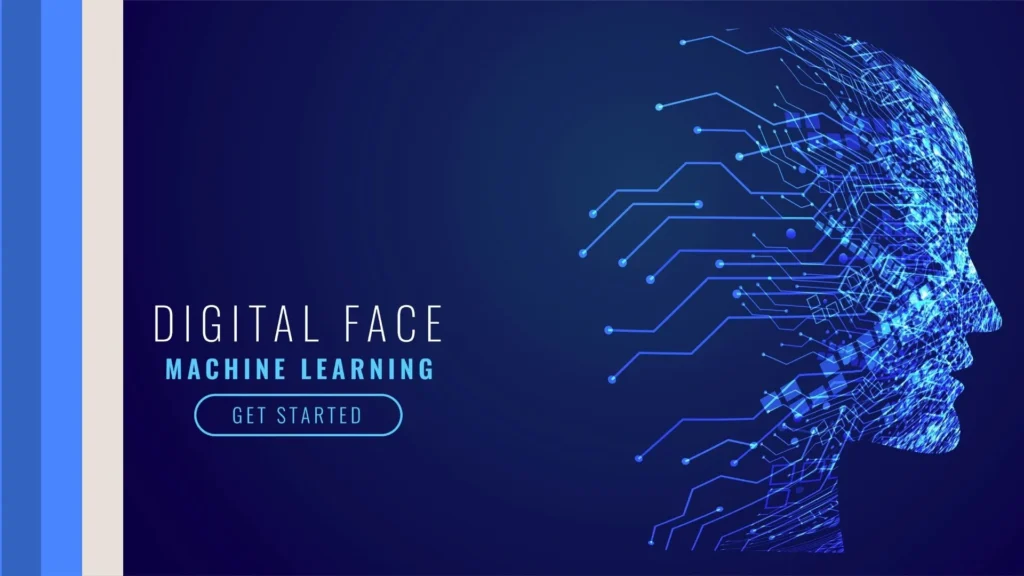At a time when automation, data and smart technology are taking over the world, knowing what is machine learning has never been a more significant subject matter. Machine learning is an extremely competent sub-domain of artificial intelligence (AI) used to make computers attain learning, such that they can make decisions or even predictions without being told to do so. This baseline tech is what is used to power search engine algorithms, personalised shopping experiences, self-driving cars, medical diagnosis tools, to mention but a few.
Machine learning boils down to feeding computers with a huge ream of data, choosing the right algorithms, and then training the models to see patterns. It encompasses many forms of learning, including, but not limited to, supervised learning, unsupervised learning, and reinforcement learning, each of which is adapted to different tasks, such as detecting fraud, making predictions or powering autonomous systems.
In addition to its functionality, the sphere of machine learning applications extends to several sectors: healthcare, finance, retail, agriculture, transportation, improving decision-making, efficiency, and personalisation. However, alongside the advantages, there are still issues of biased data, visibility on the model and concerns of loss of privacy. Going forward, new technologies, such as automated machine learning and explainable AI, will enhance ethical, accessible and impactful machine learning.
In this guide, we are looking at what is machine learning, how it works, its major types, applications in the real world, strengths, weaknesses, and where the technology is going; this provides anyone wanting to be in the parade with the current fast-moving digital world with sufficient insights.
What Is Machine Learning?
To know what is machine learning better, one should imagine such a system that, over time, grows more and smarter, depending on the facts that it collects. The system, instead of being manually coded to execute certain routines, can recognise data patterns and learn to make decisions or predictions.
Technically, machine learning is a sub-discipline of AI by which a computer exhibits behaviour without being supplied with particular directions. Rather, it is based on patterns and inference.
As an example, after viewing some science fiction films on Netflix, the service will be able to recommend to you other films of the same genre. This can be achieved based on machine learning algorithms that handle huge user data and provide insight to make appropriate recommendations.
How Does Machine Learning Work?
It is also interesting to view what machine learning does under the hood to comprehend what it is. This process normally implies:
- Data Collection-The machine learning models require data for training. This may include the following: images, audio, text, or numerical values.
- Data Preprocessing Before training, the data is to be cleaned, normalised, and structured such that the data can be digestible to the algorithms.
- Selecting Algorithm: An Algorithm is selected depending on the specific task. Some of them include decision trees, neural networks and support vector machines.
- Model Training: The algorithm goes through the data and attempts to form patterns and relations. The higher the quality of data that it is fed with, the better it is.
- Model Evaluation- The model is tested with fresh data after training to determine how well the model can generate predictions or decisions.
- Deployment: An effective model is then used in actual applications, and it keeps learning by getting more data.
These steps are necessary in the explanation of what is machine learning since they depict how the entire system develops out of simple data into smart behaviour.

Types of Machine Learning
To know what is machine learning, you should know about the various types of machine learning. Three main types exist, and each of them has its peculiarities and purposes.
1. Supervised Learning
In supervised learning, the model is trained with labelled data. This implies that the input data is label-coded with the right outputs. The algorithm trains itself by using these two outputs: its estimated results and the real results, and corrects itself.
Examples:
- Forecasting the price of houses due to their location, size, etc.
- Email filters which label an email as either spam or non-spam.
Supervised learning is best suited when the desired output is known, and there is a lot of labelled data.
2. Unsupervised Learning
Unsupervised learning involves data with no supervision. It does not know in advance what the results should be; the system attempts to discover patterns, groups or relationships.
Examples:
- Segmentation of customers according to purchases.
- Identification of anomalous dealings in the bank that could be a signal of fraud.
Such learning will be great when you are interested in having the system unravel some hidden structures in the data.
3. Reinforcement Learning
Behavioural psychology influences reinforcement learning. In this model, an agent observes an environment and gets rewards or punishments depending on the actions that it takes. The aim is to acquire techniques which will maximise the cumulative reward.
Examples:
- Training robots to be able to walk.
- Like the players of video games, they perform better with time.
Such a system can be acquired whereby machines learn their optimal actions using trial and error in dynamic settings.
Applications of Machine Learning
Learning about machine learning gets even more compelling when you find out how it is applied in the real world. There is no trade area where its versatility is found.
Healthcare
- Image recognition-based diagnosis of diseases.
- Forecasting patient outcomes from a patient’s past data.
- Tailoring treatment plans by predictive analytics computing.
Finance
- Loan checking and credit rating.
- Transactions protection against fraud.
- Predictions on the stock market.
Retail e-Commerce
- Engineers of product recommendations.
- Demand forecasting of inventory.
- Targeted marketing to the customers.
Transportation
- Self-driving vehicles.
- Fleet Maintenance prediction.
- Route optimisation and analysis of traffic patterns.
Agriculture
- Monitoring of the crop health by means of drones and sensors.
- Weather and soil-based yield forecasting.
- Wearable technology for Livestock monitoring.
These realistic uses even serve to present a clear image of what machine learning is and how it is changing modern life.

Benefits of Machine Learning
The benefits of incorporating machine learning in different regimes are too many to count. Some of the main advantages are given below:
1. Computerisation of tasks
Machine learning models can do all the repetitive and tedious work that consumes time without their intervention when they are trained.
2. Better decision making
Businesses and individuals have the opportunity to make better-informed decisions faster with access to real-time data as well as predictive analytics.
3. Cost Savings
Machine learning minimises the use of manual labour and helps to enhance efficiency, which results in saving costs.
4. Personalisation
Depending on how people use services, their preferences, and history, they can be customised to provide an improved customer experience.
5. Scalability
The machine learning models are able to work with a great amount of data and can expand to more complicated tasks.
The above advantages also highlight the importance of learning what is machine learning for any individual who has to cope with the digital world today.
Challenges of Machine Learning
Besides all its strong points, machine learning is associated with a variety of challenges:
The Quality of Data and Quantity
A lack of quality or sufficient data may have a devastating effect on the efficiency of the machine learning models. They will need accurate, relevant and thorough data.
Algorithm Bias
In case the information that is being utilised in training models is biased, the outcomes of the model will be biased as well, which will result in unfair or unethical decisions.
Interpretability
Not all machine learning models are intuitive to understand or explain why they have come to a certain decision, particularly deep learning networks are like black boxes.
Resource Intensive
Training is also the process that involves the training of complex models and may be rather time-consuming and computationally demanding, usually requiring high-powered hardware.
Privacy and Security
The weakness of machine learning systems is that they are subject to adversarial attacks and data breaches, which threaten the privacy of users and the safety of the system.
Being aware of these difficulties is an important part of the actual realisation of what machine learning is, as this shows the obligation of using it.

The Future of Machine Learning
The question, then, What is machine learning, is important when you put into consideration what it is capable of doing in the future. The field is also getting more accessible and transparent with some of the popular innovations, such as AutoML (Automated Machine Learning) or Explainable AI.
The following is how the future can look:
- Edge Computing Integration-The effort to take machine learning models to devices such as smartphones and IoT.
- Real-time Learning – Trainers that can learn and modify in real-time based on new information.
- Human-Human and AI Collaboration- And are tools that complement human skills instead of substituting them.
- Regulatory oversight Government is paying a lot of attention to establishing ethical provisions on AI and machine learning.
To sum everything up, the future of machine learning is not the future of intelligent machines but a future of responsible, intelligent systems where the ability of humans is augmented.
Conclusion
What is machine learning? It is not just a technology trend; it is a force to reckon with around us and which influences how we live, work and think. Machine learning fills the gap between an artificial system and human-level intelligence by learning from data to spot patterns, make intelligent conclusions, and apply them in decision-making.
It does not matter whether you are a curious student, a businessperson, or a tech-savvy person: knowing what is machine learning gives you the power to learn to be a more sensible and data-driven person. As we prepare ourselves to become more innovative, the role that machine learning will play will only increase, and there is no better time to get to know this shift-altering technology.
Frequently Asked Questions
Machine learning implies AI, as computers are taught to make decisions based on the data rather than through programming directly.
Such apps as Netflix, Google Search, self-driving cars, fraud detection, and voice assistants are the ones that it is used in.
The principal ones are supervised, unsupervised and reinforcement learning.
These are biased data, non-transparency, expense and privacy issues.






